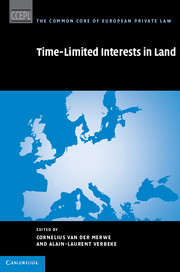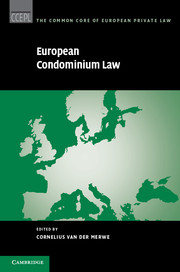Time Limited Interests in Land
A comprehensive comparative treatment of six instances of time-limited interests in land as encountered in fourteen European jurisdictions. The survey explores the commercial or social origins of each legal institution concerned and highlights their enforceability against third parties, their content and their role in land development. The commercial purpose of residential and agricultural leases is contrasted with the social aim of personal servitudes (and its common-law equivalent liferent) to provide sustenance for life to mostly family members making the latter an important estate planning device. Whereas the ingrained principles of leases and personal servitudes restrain the full exploitation of land, it is indicated that public authorities and private capital could combine to turn the old-fashioned time-limited institutions of hereditary building lease (superficies) and hereditary land lease (emphyteusis) into pivotal devices in alleviating the acute shortage of social housing and in promoting the fullest exploitation of pristine agricultural land.
- First extensive European research on the content and characteristic features of time-limited interests in land
- Highlights divergence in social policy to help readers understand how social justifications underlying different legal institutions can influence the principles ingrained in these institutions
- Underscores the important role the institutions of personal servitudes and lease can play in estate planning
Reviews & endorsements
"The general editors and the contributors are to be commended for undertaking such a bold piece of work that can justifiably claim to be a go-to reference for the comparative study of time-limited interests in land, striking a balance between historical, domestic and comparative scholarship in a pragmatic manner."
Malcolm M. Combe, Zeitschrift fur Europaisches Privatrecht
Product details
June 2012Adobe eBook Reader
9781139512732
0 pages
0kg
1 table
This ISBN is for an eBook version which is distributed on our behalf by a third party.
Table of Contents
- Part I. Introduction:
- 1. Setting the scene
- 2. General introduction
- 3. Historical evolution of the maxim 'sale breaks hire'
- 4. The many faces of usufruct
- Part II. Case Studies
- Part III. Concluding Remarks.







.jpg)
